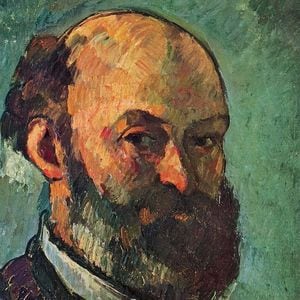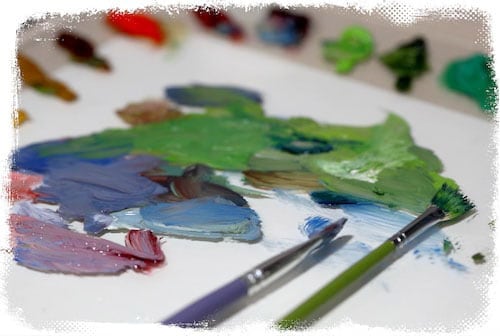
Paul Cézanne
Paul Cézanne
1 to 30 out of 634 items
1 to 30 out of 634 items
Paul Cézanne was a French post-impressionist painter whose wide range of techniques significantly impacted abstract art in the twentieth century.
Just Who Was Paul Cézanne?
French Post-Impressionist painter Paul Cézanne is often credited for bridging the gap between Impressionism in the late 19th century and Cubism in the early 20th. His work is instantly identifiable because of his unparalleled design, tone, composition, and a color sense that covers his whole career. Cézanne was a major inspiration for both Henri Matisse and Pablo Picasso.
Early Years
On January 19, 1839, Cézanne entered the world in the French city of Aix-en-Provence (also spelled Aix). His father, Philippe Auguste, had founded a successful banking institution, which provided the artist with stability in his finances throughout his life and, ultimately, a substantial legacy. Cézanne met and became friends with Émile Zola in 1852 when he enrolled at the Collège Bourbon. This association was formative for both men; Cézanne as a painter and Zola as a writer shared a young idealization of making it big in the flourishing Parisian art scene.
So, in 1856, Cézanne enrolled at the École des Beaux-Arts (School of Design) in Aix to study painting and drawing. Cézanne's father strongly disapproved of his son pursuing a profession in illustration and convinced him to enroll in law school at the University of Aix-en-Provence instead in 1858. Cézanne remained a student at the École des Beaux-Arts until 1861, even while he pursued a career in law.
In 1861, Cézanne persuaded his father to let him go to Paris so he could study art at the Académie des Beaux-Arts (now the École des Beaux-Arts in Paris) with his friend Zola. Nonetheless, he started his creative studies at the Académie Suisse after denying his candidacy for the institution. Cézanne spent five months in Paris and, although being inspired by his trips to the Louvre and, in particular, his studies of Diego Velázquez and Caravaggio, he became paralyzed by self-doubt. When he returned to Aix, he started working at his father's bank while maintaining his enrollment at the School of Design.
For the rest of the decade, Cézanne was in a state of transition and uncertainty. After a failed effort to join his father's company, he moved back to Paris in 1862 and lived there for the next year and a half. During this time, Cézanne was introduced to Gustave Courbet's and Édouard Manet's revolutionary art and became friends with Claude Monet and Camille Pissarro. The young artist was especially impressed by Eugène Delacroix's blazing romanticism. Cézanne was never quite at home in Paris, so he made frequent trips back to Aix to work in peace. During the Franco-Prussian War, for instance, he sought refuge there (1870-1871).
The 1860s
The paintings Cézanne produced in the 1860s are odd, with few apparent similarities to his later, more significant work. The content is dark and depressing, revolving around morbid obsessions and themes like religious imagery and nocturnal nightmares. His early works use a similarly lyrical and frequently ardent style. He used a palette knife to apply paints to the surface of "Man with a Blue Cap" (also known as "Uncle Dominique," 1865–1866), resulting in a character that was thick with impasto. Cézanne's "Washing of a Corpse" (1867-1869) has similar features, giving the impression of being both a mortuary scene and a pietà (a depiction of the biblical Virgin Mary).
Cézanne's style in the 1860s is remarkable because of the vitality it exudes. Despite their clumsiness and inexperience compared to the artist's subsequent expressions, these paintings nonetheless convey a tremendous depth of emotion. It always seems like the paintings are about to burst through their frames. Cézanne's actual nature was unknown to many, if not all, of his contemporaries, yet each image seems to be the creation of a guy who is either a maniac or a genius.
The annual Salons rejected Cézanne's paintings year after year, and they often drew more ridicule than the early efforts of other experimenters in the same generation. This was even though Cézanne received encouragement from Pissarro and some of the other Impressionists during the 1860s and occasionally enjoyed the critical backing of his friend Zola.
The Impressionists & Cézanne
Cézanne spent 1872 and 1873 in Pontoise, France, working closely with fellow artist Camille Pissarro. During this time, Cézanne also believed that a painter must work directly from nature. Because of this shift in creative outlook, Cézanne's paintings no longer included religious or romantic themes. Furthermore, the dark hues that had previously dominated his palette gave way to brighter, more optimistic tones.
Cézanne's decision to show in the first exhibition of the "Société Anonyme des artistes, peintres, sculpteurs, graveurs, etc." in 1874 was influenced by his time spent in Pontoise. The now-iconic 19th-century art movement may be traced back to this show, which was put on by a group of radical painters repeatedly rejected by the official Salons and whose work had inspired the word "Impressionism" (which had been invented as a pejorative). It was the first of eight exhibitions held between 1874 and 1886. Cézanne only submitted 16 paintings to the third Impressionist exhibition in 1877, after the first two exhibitions in 1874.
Cézanne began to isolate himself from his fellow Impressionists and work from his house in the south of France after 1877. Scholars have attributed his retirement to the fact that 1) the more introspective tone did not sit well with the rest of the Impressionists, and 2) the general public's lackluster reception of his artwork persisted. Cézanne did not have another public exhibition for about 20 years following the third Impressionist event.
The Impressionist movement impacted Cézanne, as seen by his work from the 1870s. Typical of the Impressionist style and the results of Monet, Renoir, and Pissarro, he painted "House of the Hanged Man" (1873–1874) and "Portrait of Victor Choque" (1875–1877) from life. Cézanne's Impressionism has been judged strained and uncomfortable, as if he were furiously striving to combine color, brushstroke, surface, and volume into a more tautly united entity, in contrast to the way the original Impressionists perceived the style. To emphasize the homogeneity and flatness of the canvas ground and to provide a clear sense of the volume and substantiality of the object, Cézanne struggled to produce the surface in "Portrait of Victor Choque." He gave each brushstroke parity with its surrounding strokes.
Many later Impressionists, including Degas and Monet, rejected Cézanne-like deviations from the classical style. The artist spent most of the 1880s pioneering a new visual "language" that could bring together the traditional and experimental manifestations of the class.
Mature
Cézanne began spending less and less time with his friends in the 1880s, during which he also experienced several profoundly personal occurrences. In 1886, the same year that his father passed away, he married the model he'd been living with for the previous 17 years, Hortense Fiquet. However, this year is mainly notable for the release of Cézanne's friend Zola's work L'Oeuvre. The protagonist is a failed painter (sometimes identified as a mash-up of Cézanne and Manet). Cézanne mistook Zola's presentation as a scathing indictment of his career and cut off all communication with him after that.
In the 1890s, Cézanne's sense of solitude in Aix started to fade. Several of Cézanne's works were shown by art dealer Ambroise Vollard in 1895, partly at the prompting of Pissarro, Monet, and Renoir. Interest in Cézanne's art gradually grew as a consequence. In 1899, 1901, and 1902, he exhibited in Paris's Salon des Indépendants, and in 1904, he was awarded an entire space at the Salon d'Automne.
Death
Cézanne became unwell after being caught in a storm while painting outside in the autumn of 1906. On October 22, 1906, the artist passed away in Aix, his place of birth. A major retrospective exhibition of Cézanne's work was held in 1907 at the Salon d'Automne.
Legacy
Paintings by Cézanne completed in his last three decades ushered in new canons for the evolution of contemporary art. The artist channeled the natural energy of his youth into the systematic development of a visual language that would influence almost every revolutionary era of 20th-century art.
Many of Cézanne's paintings, such as "Bay of Marseilles from L'Estaque" (1883-1885), "Mont Sainte-Victoire" (1885-1887), "The Cardplayers" (1890-1892), "Sugar Bowl, Pears, and Blue Cup" (1866), and "The Large Bathers," display this new vocabulary (1895-1905). Landscapes, still lifes, and portraits all seem to sprawl out in every direction across the canvas, begging for the viewer's undivided attention.
By using small, hatching brushstrokes, Cézanne could depict particular masses and spaces as if they were carved out of paint while preserving the overall unity of his paintings' surfaces. It has been suggested that examining the form used by Cubism in the 20th century is at work in these brushstrokes. Color, while unifying and establishing surface, also tends to affect interpretations of space and volume; by drawing immediate attention to a painting's flatness, the artist can abstract space and volume for the viewer, both of which are subject to their medium (the material used to create the work). Many art historians consider this aspect of Cézanne's work to be a defining moment in the development of abstract painting in the 20th century.
Most paintings Paul Cézanne did are about Landscape, Still life, Portrait, Nude, People, Sketch and Study, House, and other subjects.
Most of the artist's works that can be seen by the public today are now kept in museums like Musée d'Orsay, Metropolitan Museum of Art - New York, NY, The Barnes Foundation, National Gallery of Art - Washington DC, The State Hermitage Museum - St Petersburg, and others.
Famous Paul Cézanne period artists include Pierre Auguste Renoir (French, 1841 -1919), Eugène-Louis Boudin (French, 1824 -1898), Claude Monet (French, 1840 -1926), Camille Pissarro (French, 1830 -1903), Edgar Degas (French, 1834 -1917), Ivan Constantinovich Aivazovsky (Russian, 1817 -1900), Alfred Sisley (French, 1839 -1899), William Merritt Chase (American, 1849 -1916), Odilon Redon (French, 1840 -1916), Paul Gauguin (French, 1848 -1903), Armand Guillaumin (French, 1841 -1927), Ilia Efimovich Repin (Russian, 1844 -1930), and others.
Get inspired by the most famous paintings of Paul Cézanne. Pick your favorite, and one of our talented artists will make a copy just like the original, making it a unique gift or piece of art for your home. If you can't find a specific Paul Cézanne, contact us for a price quote.






























